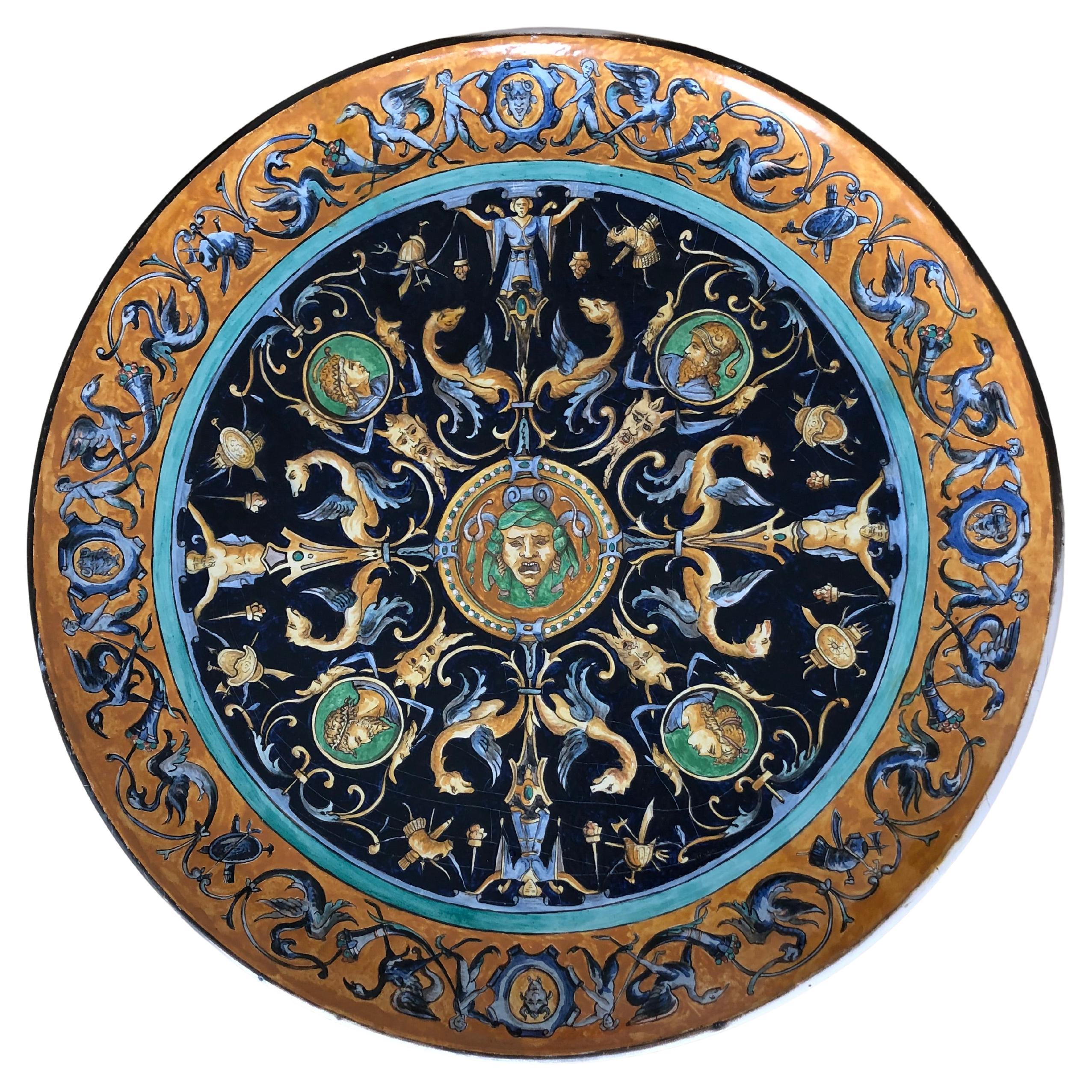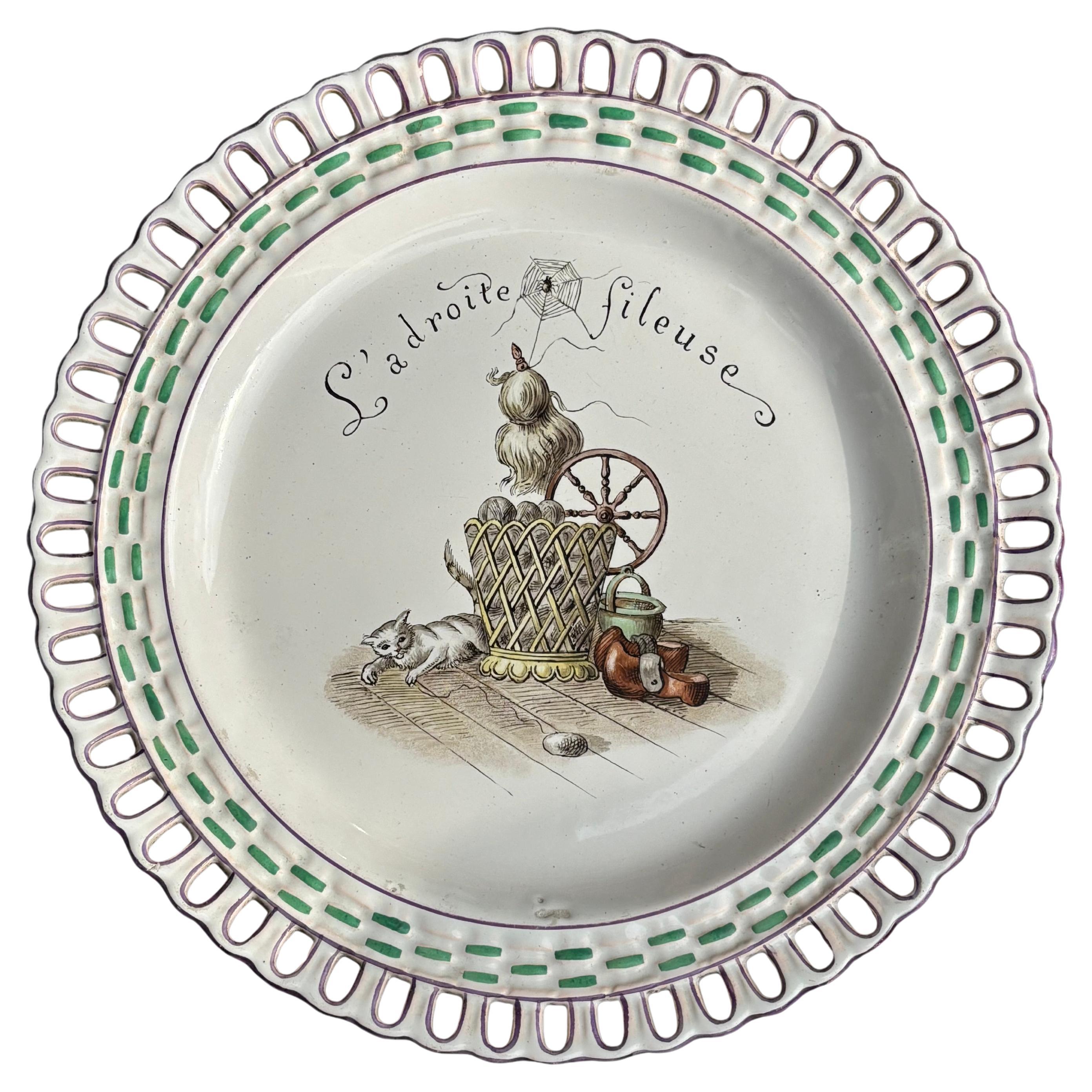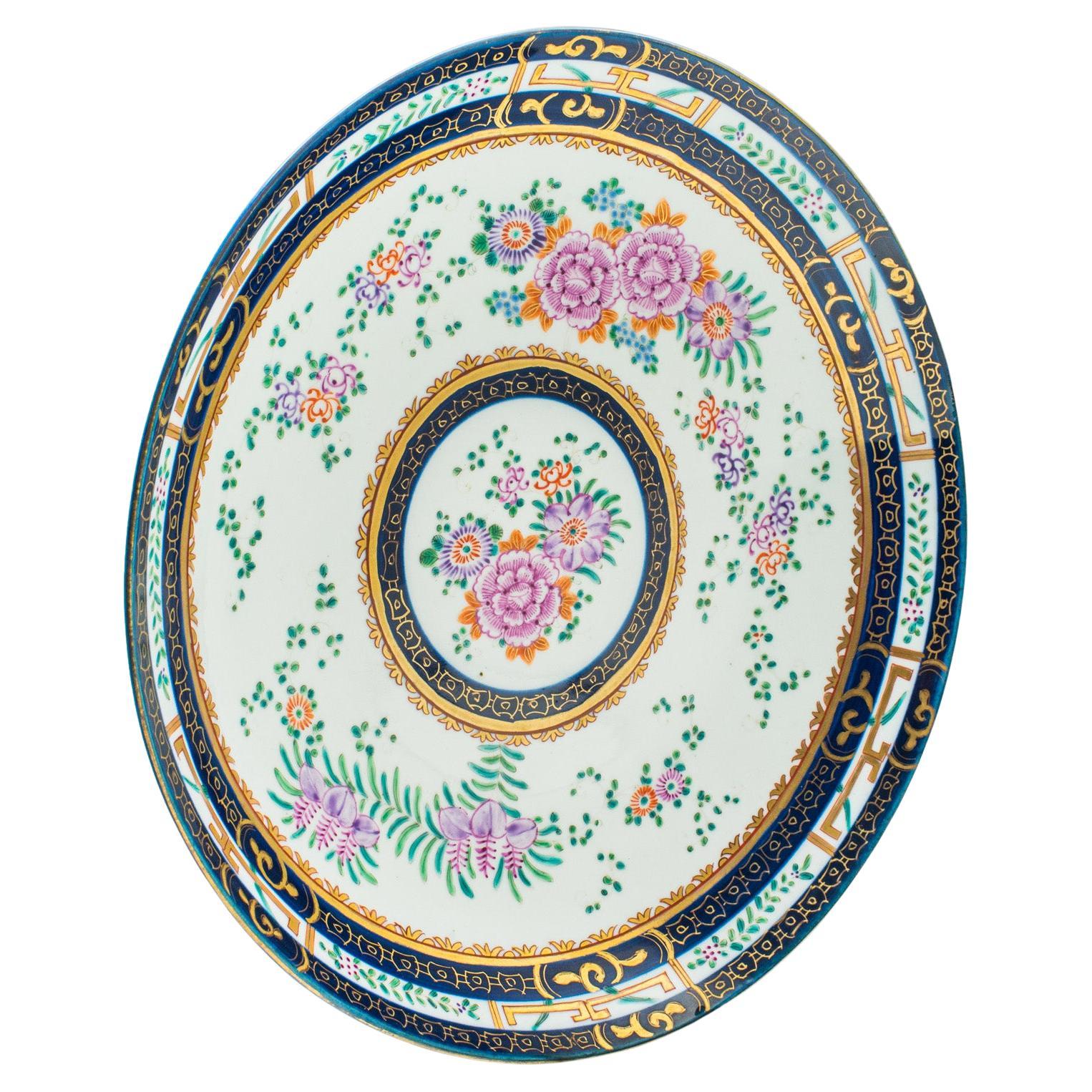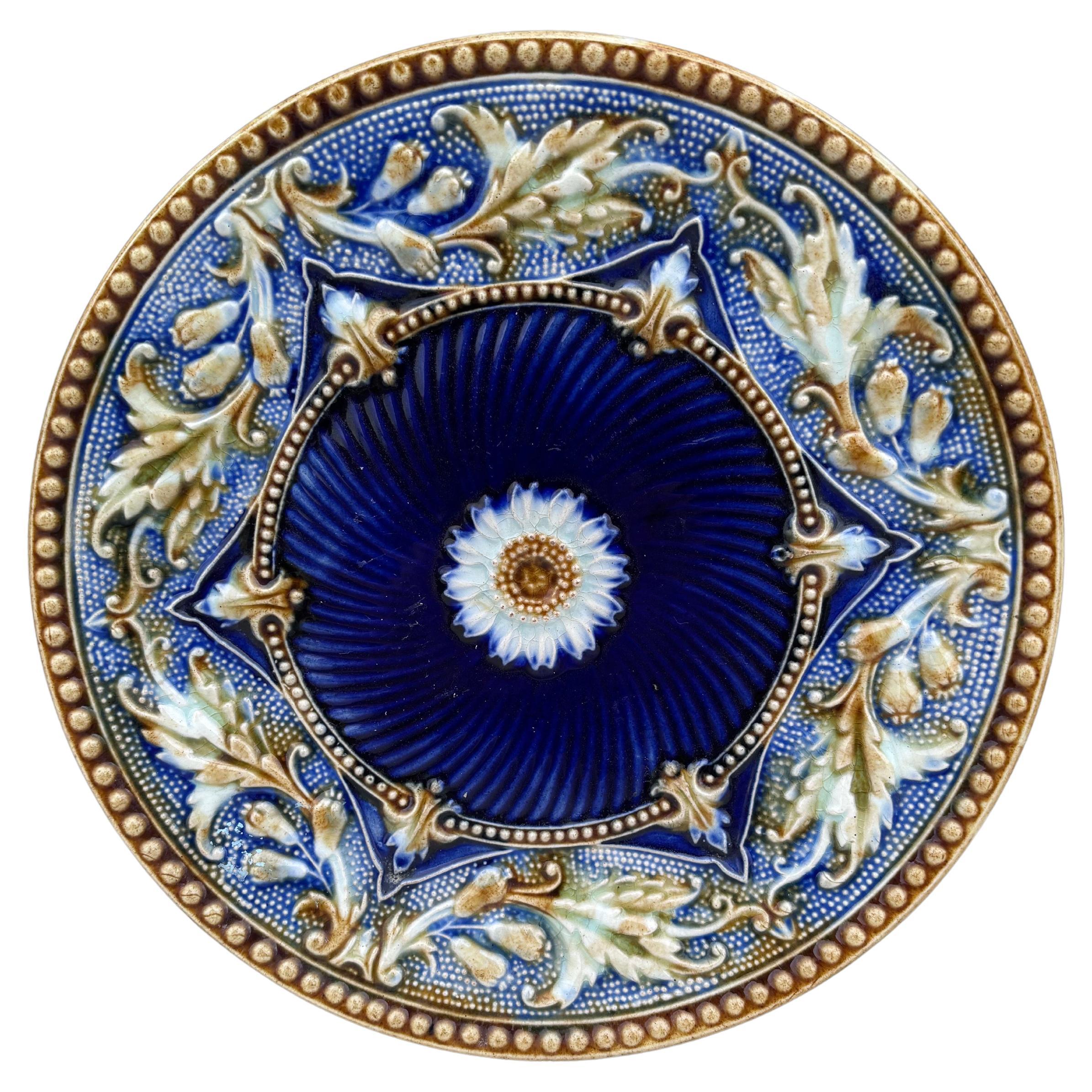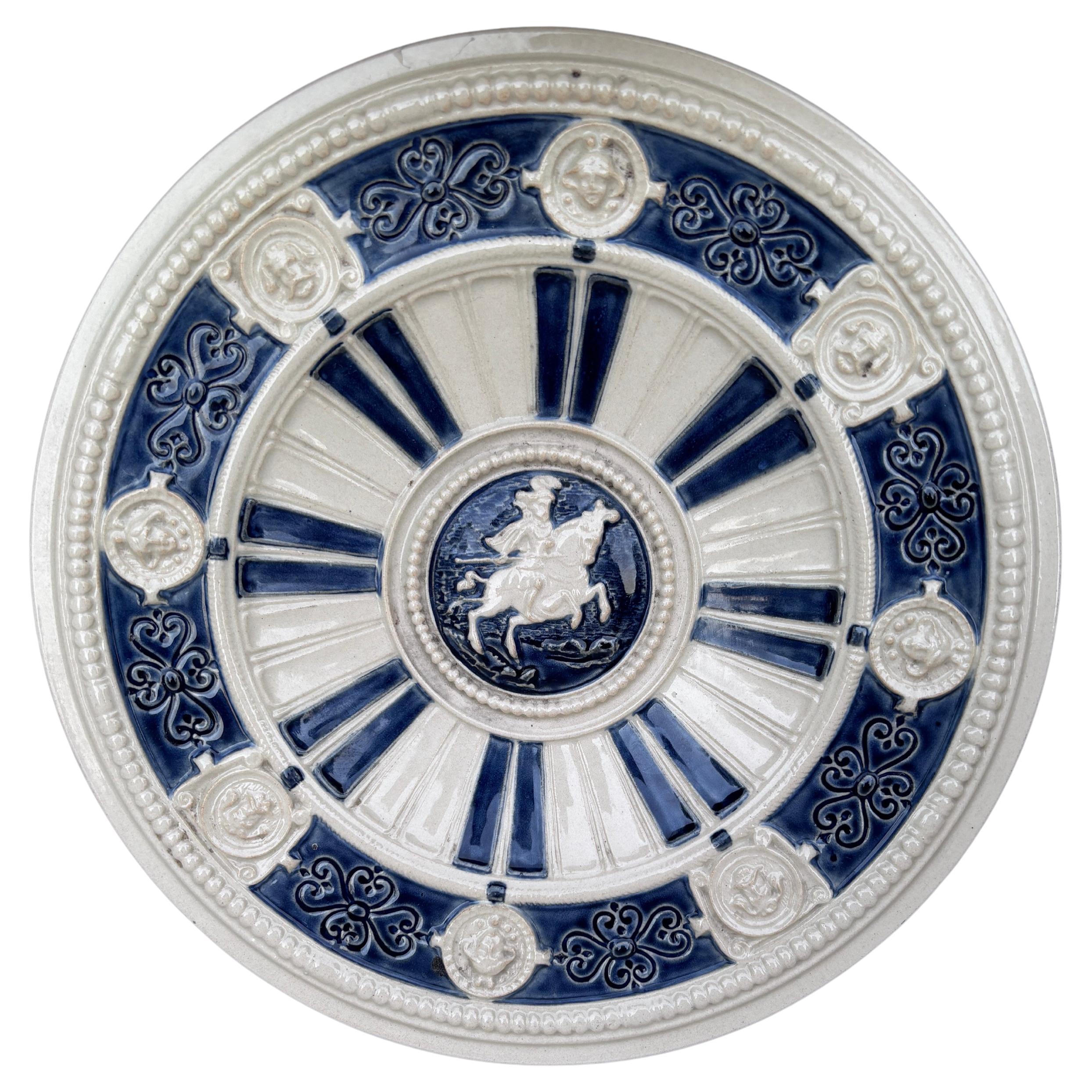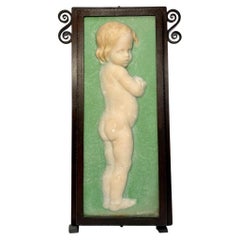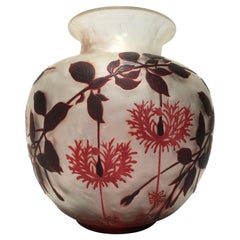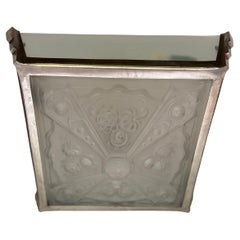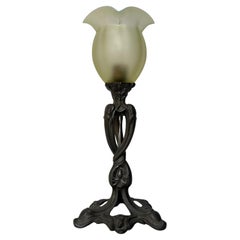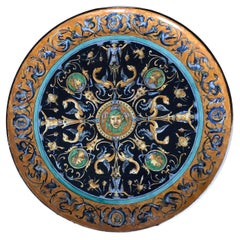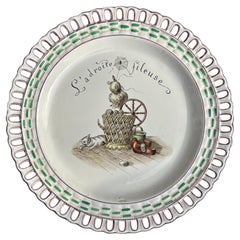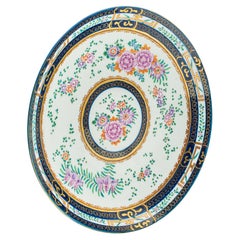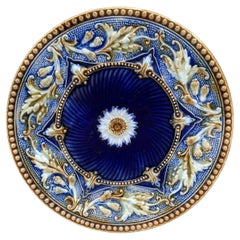Items Similar to Paris Universal Exhibition 1889 Large Art Nouveau Dish
Want more images or videos?
Request additional images or videos from the seller
1 of 19
Paris Universal Exhibition 1889 Large Art Nouveau Dish
$2,635.92
£1,961.90
€2,200
CA$3,610.55
A$4,015.72
CHF 2,096.88
MX$48,866.98
NOK 26,780.38
SEK 25,115.27
DKK 16,747.83
Shipping
Retrieving quote...The 1stDibs Promise:
Authenticity Guarantee,
Money-Back Guarantee,
24-Hour Cancellation
About the Item
UNIVERSAL EXHIBITION 1889 Large octagonal dish in enamelled slip, the blue and gilt wing with the arms of Paris, adorned with foliage cartouches, festoons, attributes of the sciences, arts, music and agriculture, the center decorated in half relief of a view of the Universal Exhibition of Paris in 1889, of the Eiffel Tower and of the Central Pavilion.
Olivier De SORRA, G. MORTREUX Frères, Paris.
In good condition, lacks on the gilding.
Height: 45.5cm
Width: 45cm
Depth: 4.5cm
Weight: 6kg
Provenance: according to family tradition, this dish would have been made in two copies on the orders of Gustave Eiffel, one would have been offered to the City of Paris in gratitude for the concession of the Eiffel Tower which would have been granted to him for 20 years, the other would be dedicated to his banker
Art Nouveau potter Olivier de Sorra is known for the fine stoneware and crystalline enamels he produced at his factory in Pierrefonds.
- Dimensions:Height: 17.92 in (45.5 cm)Width: 17.72 in (45 cm)Depth: 1.78 in (4.5 cm)
- Style:Art Nouveau (Of the Period)
- Materials and Techniques:Ceramic,Enameled
- Place of Origin:
- Period:
- Date of Manufacture:1899
- Condition:Wear consistent with age and use. Lacks on the gilding.
- Seller Location:NANTES, FR
- Reference Number:1stDibs: LU7403232330622
About the Seller
No Reviews Yet
Vetted Professional Seller
Every seller passes strict standards for authenticity and reliability
1stDibs seller since 2022
45 sales on 1stDibs
Typical response time: 10 hours
- ShippingRetrieving quote...Shipping from: NANTES, France
- Return Policy
Authenticity Guarantee
In the unlikely event there’s an issue with an item’s authenticity, contact us within 1 year for a full refund. DetailsMoney-Back Guarantee
If your item is not as described, is damaged in transit, or does not arrive, contact us within 7 days for a full refund. Details24-Hour Cancellation
You have a 24-hour grace period in which to reconsider your purchase, with no questions asked.Vetted Professional Sellers
Our world-class sellers must adhere to strict standards for service and quality, maintaining the integrity of our listings.Price-Match Guarantee
If you find that a seller listed the same item for a lower price elsewhere, we’ll match it.Trusted Global Delivery
Our best-in-class carrier network provides specialized shipping options worldwide, including custom delivery.More From This Seller
View AllGeorges Despret Rare Decorative Plate in Glass Paste
By Georges Despret 1
Located in NANTES, FR
Exceptional and rare plate in glass paste by Georges Despret.
Jade-colored background, flesh-colored child and blond hair.
In very good condition and electrified. A cooking stress at the knee is to be reported.
Plaque :
Width: 17.8cm
Height: 46cm
Frame:
Width: 23cm
Height: 51cm
Georges DESPRET (1862-1952), a native of Binche (Belgium), developed a glass paste technique at the same time as Henry...
Category
Early 20th Century Belgian Art Nouveau Mounted Objects
Materials
Wrought Iron
Cristallerie de Pantin Vase Art Nouveau Decor Floral
By Cristallerie de Pantin
Located in NANTES, FR
Art Nouveau vase around 1910. In perfect condition. Decorated with chrisenthems.
Rose-colored leaves, buds, and flower clusters executed in two layers on colorless ground, signed on ...
Category
Early 20th Century Art Nouveau Vases
Materials
Glass
Art Deco Ceiling Light Attributed to Val Saint Lambert
By Val Saint Lambert
Located in NANTES, FR
Large Art Deco ceiling light, circa 1930.
Nickel-plated bronze frame. Central molded glass pane attributed to Vals Saint Lambert.
4 sandblasted glass side panels.
In perfect conditio...
Category
Mid-20th Century Belgian Art Deco Chandeliers and Pendants
Materials
Bronze, Nickel
Art Nouveau Lamp Stamped Les Etains de France
Located in NANTES, FR
Flower lamp circa 1900.
Pewter base topped with an opalescent uraline tulip.
Electrified and in perfect condition.
Stamped Les Etains De France.
Total height: 35 cm
Pedestal diamete...
Category
Early 20th Century French Art Nouveau Table Lamps
Materials
Pewter
Art Deco Illuminated Urn Basin
Located in NANTES, FR
Large Art Deco illuminated urn basin, circa 1930.
Made of bronze and copper, decorated with a draped woman holding a bouquet of wheat and a dove flying above.
This is probably a uniq...
Category
Mid-20th Century French Art Deco Table Lamps
Materials
Bronze, Copper
René Lalique Art Deco Dish Gazelles Model
By René Lalique
Located in NANTES, FR
Plate Signed René Lalique .
Gazelles model created on 21.11.1925.
Model referenced in the catalog Raisonné by Felix Marcilhac page 295 No. 390.
In perfect condition.
Diameter: 29.5 ...
Category
Vintage 1920s French Art Deco Decorative Dishes and Vide-Poche
Materials
Glass
You May Also Like
A NEOCLASSICAL ART NOUVEAU Ceramic PLATE by EMILE BALON BLOIS SCHOOL France 1900
By Emile Balon 1
Located in PARIS, FR
An exceptional, rare and large decorative dish, Art-Deco, Art Nouveau, Modernist, Shabby-Chic, in thick circular ceramic featuring rare, complex and superb figurative decorations, by...
Category
Antique Early 1900s French Art Nouveau Ceramics
Materials
Ceramic, Stoneware, Paint
Emile Galle Nancy ceramic / Faience plate Enamel/ paint Decorative Art Nouveau
By Émile Gallé
Located in Los Angeles, CA
Beautiful painted ceramic by the well known Art Nouveau artist/ designer Emile Galle, also known for cameo glass etched and furniture .
Category
Antique Late 19th Century French Art Nouveau Platters and Serveware
Materials
Ceramic, Faience
Antique Deep Display Charger, French, Ceramic, Decorative Plate, Victorian, 1900
Located in Hele, Devon, GB
This is an antique deep display charger. A French, ceramic decorative plate, dating to the late Victorian period, circa 1900.
Fascinating profile with a generous size and lovely Fa...
Category
Antique Late 19th Century French Late Victorian Ceramics
Materials
Ceramic
19th Century French Majolica Plate
By Orchies
Located in Austin, TX
Rare blue French Majolica plate with flowers and acanthus leaves Orchies, circa 1890.
Category
Antique 1890s French French Provincial Dinner Plates
Materials
Ceramic
19th Century French Majolica Plate
By Orchies
Located in Austin, TX
Rare blue French Majolica plate with flowers and acanthus leaves Orchies, circa 1890.
Category
Antique 1890s French French Provincial Dinner Plates
Materials
Ceramic
French Neo-Renaissance Majolica Plate circa 1890
Located in Austin, TX
French Neo-Renaissance Majolica Plate circa 1890.
Decorated with a cavalier on the center, border with medallion portraits.
Category
Antique 1890s French Renaissance Revival Decorative Art
Materials
Ceramic, Faience, Majolica
More Ways To Browse
Art Nouveau Dish
Eiffel Tower Glass
Gustave Eiffel
Ceramic Cake Plate
Jacques Adnet Ceramic
Otto Fat Lava
Retro Sake Set
Wedgwood Cobalt
16th Century Spanish Tile
19th Century Chinoiserie Small Plate
Antique Turkish Tiles
Madoura Suzanne Ramie
Spanish Lebrillos
Antique Rose Medallion Bowl
Chinese Blue And White Tray
Japan Mugs
Japanese Majolica
Japanese Satsuma Porcelain Plates
